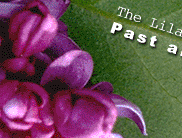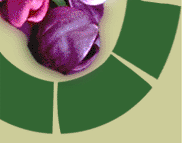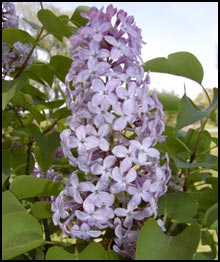





 | ||||||||
|
||||||||
 |
||||||||
|
Single French Hybrids In its Balkan home, common lilac (Syringa vulgaris) bears single, four-lobed, pale purple flowers. Lilac breeders have worked to expand floret size, shape and colour range. They are also selected for double florets, unusual foliage and disease resistance. The resulting cultivated varieties are called French hybrid lilacs. |
Lilac roots The common lilac (Syringa vulgaris) made its way from its central European home to western Europe via Constantinople. A scholar visiting the court of Suleiman the Magnificent brought gifts from the Sultanís garden back to the Austrian court ó including lilac cuttings. These were planted in Vienna in 1563, and soon spread to other cities. Over 300 years later, French horticulturist, Victor Lemoine, began the work that changed this plantís destiny. |
|||||||||||||||||
|
Something old, something new Some single French cultivars grew in gardens before 1850. At this time, hybridization was not well understood, and most varieties came from seeds resulting from natural pollination. However, the single French lilac continues to be a significant lilac cultivar with recent introductions. |
Victor Lemoine was the first to work on deliberate hybridization of lilacs, and his earliest introduction was 'Gloire de Lorraine' in 1876. His son …mile continued in his fatherís footsteps, followed by grandson Henri who introduced the final Lemoine lilac, 'Souvenir de Louis Chasset', in 1953. |
|||||||||||||||||
|
||||||||||||||||||
 Introduction
Introduction
